Archive | Industry and trade RSS feed for this section
Industry and trade
 Industry and trade
Industry and trade
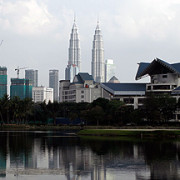 Industry and trade
Industry and trade
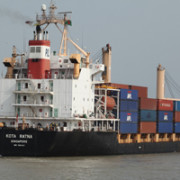 Industry and trade
Industry and trade
 Industry and trade
Industry and trade
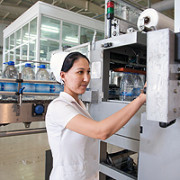 Industry and trade
Industry and trade
 Industry and trade
Industry and trade
 Industry and trade
Industry and trade
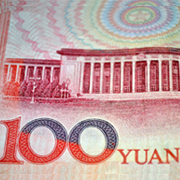 Industry and trade
Industry and trade
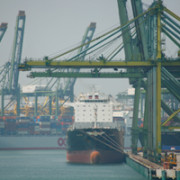 Industry and trade
Industry and trade
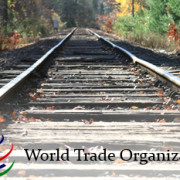
Will Asian investment follow trade with Latin America?

Latin America is firmly on the economic radar of Asia in the post-global financial crisis world economy. Both Asia and Latin America have grown faster than the world economy. As Figure 1 shows, during 2009–2013, annual average growth was 4.6% in Asia, 2.4% in Latin America, and 1.9% for the world economy. Trade between the two regions has grown significantly, reaching a historic high of over half a billion dollars in 2014 (see Figure 2). This figure is projected to increase to $750 billion by 2020. Increased trade has prompted a flurry of diplomatic activity. In July 2014 the President of the People’s Republic of China (PRC), Xi Jinping, visited Argentina, Brazil, Cuba, and Venezuela. Shortly afterward, Japanese Prime Minister Shinzo Abe visited Brazil, Chile, Columbia, and Mexico. Pledges of trade, foreign direct investment (FDI) and foreign aid accompanied these high-level visits.
SME internationalization through global value chains and free trade agreements: Malaysian evidence

Regionalism in Asia led by global value chains (GVCs) and free trade agreements (FTAs) has increasingly put the spotlight on small and medium-sized enterprises (SMEs). As one of Asia’s success stories in internationalization, Malaysia offers interesting insights. Drawing on research on Malaysian enterprises, this article examines the characteristics of SMEs which have successfully internationalized by participating in GVCs and FTAs and explores their policy implications. It seeks to improve our understanding of the internationalization of SMEs in Asia and contribute to the scant literature.
Minimizing Asian losses from the TTIP: A European view

Like the Trans-Pacific Partnership, the Regional Comprehensive Economic Partnership, and the Free Trade Area of the Asia-Pacific, the Transatlantic Trade and Investment Partnership (TTIP) between the European Union (EU) and the United States (US) is a second-best approach to trade and investment liberalization compared to a global agreement. A global agreement is not within reach, and thus Asia, as a non-beneficiary, will incur trade losses similar to the losses that Europe would incur as a non-beneficiary of an Asia-Pacific agreement on free trade.
From global factory to global mall: East Asia’s changing export composition

Over the past decades, East Asia has been the most successful region in the world in building up cross-border supply chains and has subsequently become described as “Factory Asia” (Baldwin 2008). In a form of “triangle trade”, advanced countries in East Asia exported sophisticated parts and components to less developed countries in the region, where these are assembled into final consumption goods and then shipped to rich-nation markets, especially the US and EU (Baldwin and Kawai 2013).
The German Mittelstand – a model for Asia’s emerging economies?

German Mittelstand (GM), the small and medium-sized enterprises (SMEs) in Germany—are a unique and highly successful economic phenomenon that could serve as a model to promote trade and industry for emerging Asia.
Is finance a binding constraint for SME participation in trade in Asia?

Small and medium-sized enterprises (SMEs) are a very important part of Asia’s economy. In this article, we explore SMEs and their financing issues with respect to the performance of SMEs in international trade, based on the sample of more than 8,000 companies across the People’s Republic of China (PRC) and Association of Southeast Asian Nations (ASEAN) member states. The discussion is derived from a recent Asian Development Bank Institute (ADBI) working paper (Jinjarak, Mutuc, and Wignaraja 2014).
The new mega-regionals: the TPP, RCEP and beyond

The world may be on the verge of renewing the global trading system with huge “mega-regional” negotiations on the trade rules of the 21st century. These negotiations include the Regional Comprehensive Economic Partnership (RCEP), the Trans Pacific Partnership (TPP), and the Transatlantic Trade and Investment Partnership (TTIP); the countries involved cover nearly 80% of global GDP. The hope is that these approaches will overcome constraints that have held up progress in the World Trade Organization (WTO).
Use of national currencies for trade settlement in East Asia: A proposal

Financial cooperation and integration in East Asia has been languishing for almost a decade. But ASEAN, the People’s Republic of China (PRC), Japan, and the Republic of Korea (henceforth, Korea), or ASEAN+3, have been more successful in promoting free trade in East Asia by establishing a number of bilateral and plurilateral free trade agreements (FTAs) with countries in the region and outside the region.
Government procurement – key element in TPP; Missed opportunity in RCEP?

Government procurement has been treated quite differently in trade agreements initiated by the US than in those that have been led by Asian governments. US-led trade agreements, including the Trans-Pacific Partnership Agreement (TPP), incorporate government procurement commitments as an important element. In contrast, Asian-led trade agreements omit or minimize government procurement provisions. The parties to Asian agreements, such as the Regional Comprehensive Economic Partnership (RCEP), should consider the benefits of including government procurement in their trade pacts.
Back on track? The importance of the Bali Package for the WTO and global trade

After several days of grueling negotiations the Ninth WTO Ministerial Conference in Bali, Indonesia, in December 2013, adopted the Bali Package aimed at mainly streamlining global trade. However, this is only the first step toward a Doha deal and much work remains to re-formulate a post-Bali agenda, as well as reform of the WTO to restore its relevance as a key pillar of multilateral trade relations.


Search
Subscribe / Connect to Asia Pathways
Subjects
- Agriculture and natural resources
- Blog
- Capacity development
- Climate change
- Economics
- Education
- Energy
- Environment
- Finance sector development
- Gender
- Governance and public sector management
- Health
- Industry and trade
- Information and Communications Technology
- Infrastructure
- Miscellaneous
- Population
- Poverty
- Private sector development
- Regional cooperation and integration
- Sanitation
- Social development and protection
- Transport
- Uncategorized
- Urban development
- Video Blog
- Water
Recent Posts
- Increasing trust in cross-border e-commerce and artificial intelligence
- Enhancing access to maternal and newborn healthcare in developing Asia
- Can electric vehicles lead the way to a sustainable future?
- Mitigating climate-related sovereign risk to accelerate action on the climate emergency
- Water security through effective wastewater management: Lessons from Japan’s public–private partnerships




Recent Comments